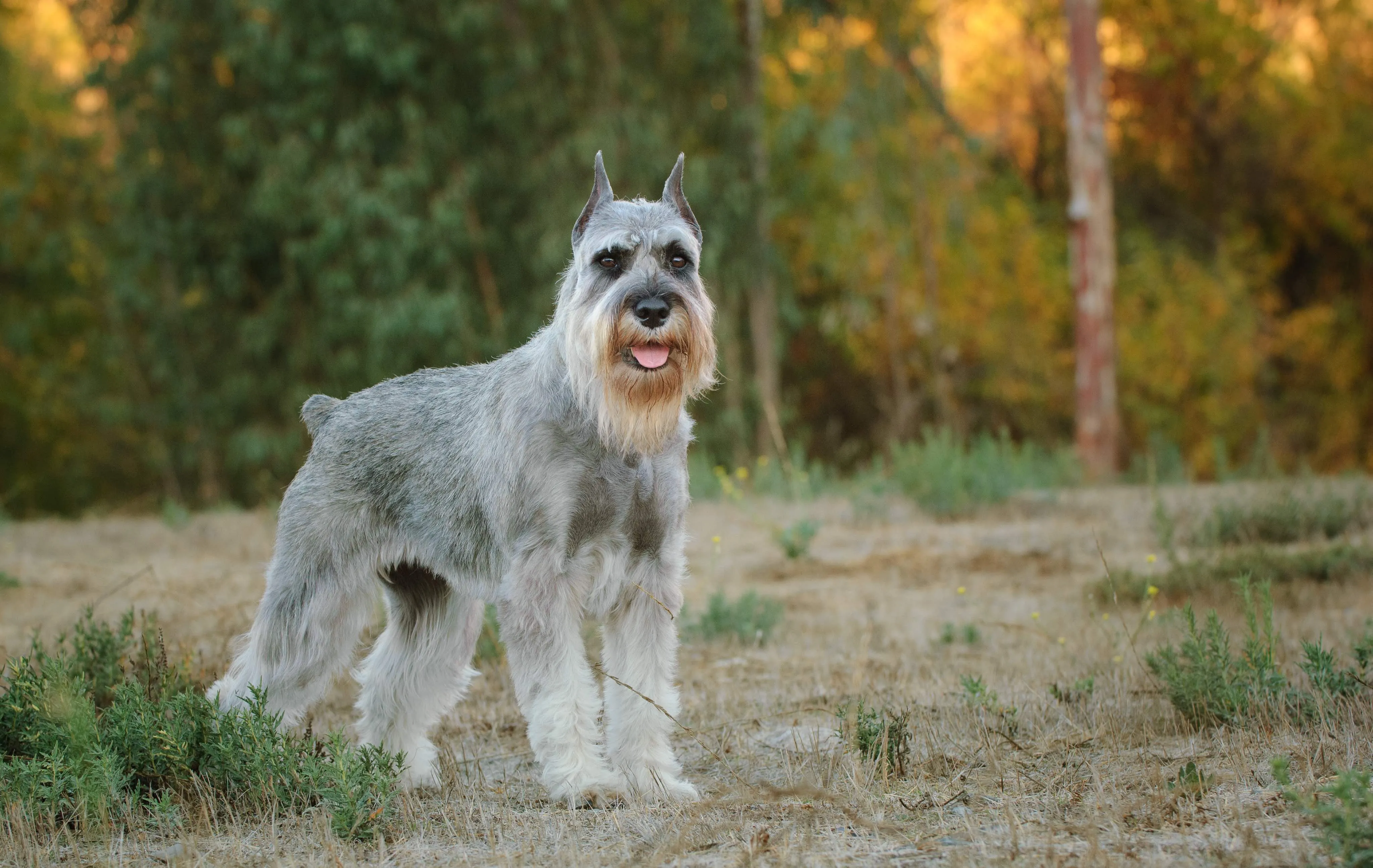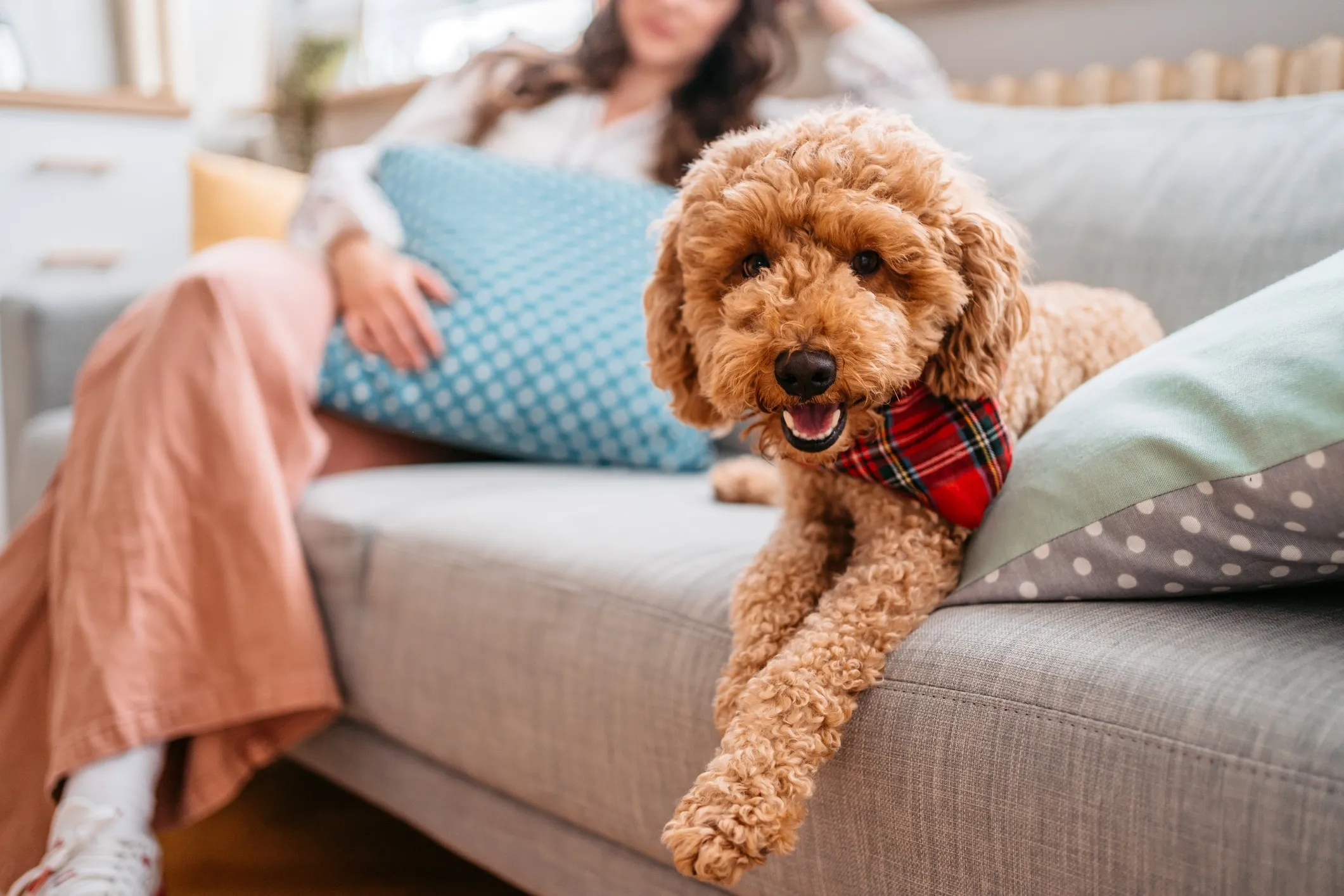For many dog lovers, the dream of companionship is often challenged by pet allergies. While no dog is entirely “hypoallergenic,” certain breeds produce fewer allergens, making them a fantastic choice for individuals sensitive to dander, saliva, or urine. Focusing on medium-sized companions offers a perfect balance: substantial enough for active families, yet manageable for various living situations. If you’re searching for medium dog breeds that don’t shed a lot, you’re in the right place. This guide explores some of the best medium-sized, low-shedding breeds that can bring joy without the sniffles.
Understanding “Hypoallergenic” Dogs
The term “hypoallergenic” can be a bit misleading, as it doesn’t mean “100% allergen-free.” All dogs, regardless of breed, produce allergens. However, some breeds are specifically known to produce fewer allergens, primarily through less shedding. Allergens are typically found in a dog’s dander (dead skin cells), saliva, and urine. Dogs that shed less tend to release fewer of these allergens into the environment, making them more tolerable for people with allergies. Understanding this distinction is key to choosing the right furry friend for an allergy-sensitive home.
Excellent Medium-Sized Breeds That Don’t Shed
When considering a medium-sized dog that won’t leave a carpet of fur behind, several breeds stand out. These dogs combine a manageable size with coats that are less likely to trigger allergic reactions, provided proper grooming is maintained.
1. Miniature Schnauzer
The Miniature Schnauzer is a popular choice for those seeking a medium-sized, low-shedding companion. Standing no more than 14 inches tall and typically weighing between 10 to 20 pounds, these smart and spirited dogs adapt well to various living environments. Their distinctive wiry, double coat sheds minimally, but it does require regular grooming to prevent matting and maintain its characteristic look. Daily exercise, at least an hour, helps keep these intelligent dogs happy and well-behaved, preventing boredom.
2. Standard Schnauzer
For those who appreciate the Miniature Schnauzer’s qualities but desire a slightly larger dog, the Standard Schnauzer is an excellent option. These dogs can weigh up to 45 pounds, placing them firmly in the medium-sized category. Like their smaller counterparts, Standard Schnauzers boast a wiry coat that sheds very little, making them a good fit for allergy sufferers. They are highly intelligent, energetic, and thrive on activity. They love long walks, engaging in games of fetch, and solving dog puzzle toys to keep their minds stimulated.
 Salt and pepper Standard Schnauzer standing in a field
Salt and pepper Standard Schnauzer standing in a field
3. Portuguese Water Dog
Originally bred to assist fishermen in Portugal, the Portuguese Water Dog is a robust, medium-sized breed known for its intelligence and friendly nature. Their thick, curly coat is a significant advantage for allergy sufferers as it sheds very little. These dogs are highly trainable and enjoy activities that challenge both their bodies and minds. Being true “water dogs,” they love swimming, making regular aquatic exercise an excellent way to keep them happy and healthy. Playing fetch with floating toys is an ideal activity for these energetic pups, ensuring they get the stimulation they need.
4. Labradoodle
The Labradoodle, a crossbreed of a Labrador Retriever and a Poodle, was originally developed to be a hypoallergenic service dog. These intelligent, friendly, and highly trainable dogs make excellent family pets. Their coat can vary from wavy to curly, but most Labradoodles are known for their low-shedding qualities, inherited from their Poodle parent. To maintain their beautiful coats and prevent matting, regular grooming is essential. They are gentle and affectionate, especially when well-exercised and socialized from an early age, making them a wonderful addition to homes looking for great family dog breeds that don’t shed.
5. Goldendoodle
Another popular “doodle dog,” the Goldendoodle, is a cross between a Golden Retriever and a Poodle. Similar to Labradoodles, these dogs are highly intelligent, possess a friendly nature, and shed minimally. Their coats come in a wide range of colors and textures and require frequent grooming with a dog slicker brush to prevent matting. Goldendoodles are known for their affectionate and playful personalities, making them adaptable companions for various families. Their low-shedding quality combined with their amiable temperament makes them a sought-after breed for allergy-sensitive households.
 Goldendoodle lying on a couch with a person sitting in the background
Goldendoodle lying on a couch with a person sitting in the background
6. Lagotto Romagnolo
Hailing from Italy, the Lagotto Romagnolo was originally bred as a water retriever and is a medium-sized dog. Their curly, woolly coat is not only distinctive but also provides excellent protection from chilly waters and is considered low-shedding. While less common than some other breeds on this list, Lagotti Romagnoli (the proper plural) are known to be good with children and other pets, making them fantastic family dogs. Their cheerful disposition and robust nature ensure they are always ready for an adventure.
7. Irish Water Spaniel
The Irish Water Spaniel is a distinguished medium-to-large breed known for its intelligence, friendly demeanor, and high trainability. Originally bred for retrieving game from water, they possess a thick, curly, liver-colored coat that requires regular grooming but sheds very little. These dogs have a high energy level, making exercise essential to keep them happy and healthy. Their playful spirit and unique appearance make them an engaging companion for active families.
8. Aussiedoodle
A cross between an Australian Shepherd and a Standard or Miniature Poodle, the Aussiedoodle is a highly intelligent and energetic hypoallergenic dog. Thanks to both parent breeds, they are very smart and need consistent mental and physical stimulation. If not given enough outlets for their energy, they can become destructive. Therefore, plenty of exercise and mental enrichment with toys like dog treat dispensers are crucial to keep an Aussiedoodle content. Their low-shedding coat comes in various colors and patterns, reflecting their diverse genetic heritage.
 Standard Aussiedoodle dog standing on a beach
Standard Aussiedoodle dog standing on a beach
9. Soft Coated Wheaten Terrier
The Soft Coated Wheaten Terrier is a charming medium-sized Irish breed known for its incredibly soft, silky coat that sheds minimally. As terriers, Wheatens maintain a high energy level throughout their lives and require ample exercise and mental stimulation to be at their best. They are playful, affectionate, and generally good-natured, making them wonderful companions for active families. Their characteristic wheat-colored coat is a hallmark of the breed and requires regular brushing to prevent tangles and mats.
10. Schnoodle
Combining two hypoallergenic dog breeds—the Schnauzer and the Poodle—the Schnoodle is a designer dog known for its low-shedding coat. Their coat can be curly or wavy, depending on the traits inherited from their parents, but it’s consistently low-shedding. Schnoodles are intelligent, playful, and affectionate, often inheriting the best qualities of both breeds. They are adaptable to various living situations as long as their needs for exercise and companionship are met.
11. Whoodle
A delightful cross between a Soft-Coated Wheaten Terrier and a Poodle, the Whoodle is a friendly dog that exhibits very little shedding. These dogs inherit both their intelligence and affectionate nature from their parent breeds, resulting in a charming and loyal companion. Their soft, wavy to curly coats require regular grooming to keep them looking their best. Whoodles thrive on human interaction and active play, making them well-suited for families who can provide them with consistent engagement and exercise.
12. Xoloitzcuintli (Medium Size)
The Xoloitzcuintli, also known as the Mexican Hairless Dog, is an ancient and rare breed available in three sizes: toy, miniature, and standard. The medium and standard varieties fit our criteria for medium-sized dogs. While famous for their hairless bodies, some Xolos are born with a short, smooth coat. Both the hairless and short-coated varieties are considered hypoallergenic. These dogs are known for being calm, loyal, and intelligent companions, making them unique and fascinating pets.
 Black Mexican Hairless Dog standing in grass
Black Mexican Hairless Dog standing in grass
13. Peruvian Inca Orchid (Medium Size)
Another rare and ancient breed, the Peruvian Inca Orchid, is also found in three sizes: small, medium, and large. The medium-sized Peruvian Inca Orchid is an excellent hypoallergenic choice due to its nearly hairless body. These elegant and agile dogs are known for their lively and affectionate personalities, thriving on close companionship with their families. As the national dog of Peru, they possess a unique historical significance and make intriguing pets for those looking for something truly different.
14. Bedlington Terrier
Often described as “a lamb in dog’s clothing,” the Bedlington Terrier is a small-to-medium, curly-haired breed distinguished by its unique topknot hairdo and pom-pom ear tufts. Weighing between 17-23 pounds for males and 15-22 pounds for females, they can comfortably be considered a medium-sized option. This breed’s distinctive coat produces fewer allergens, but it requires diligent care through regular brushing and professional stripping to prevent matting. Bedlington Terriers are deeply devoted to their people and can develop separation anxiety if left alone for extended periods, highlighting their need for companionship.
15. Standard Poodle
While Poodles come in three sizes (Toy, Miniature, and Standard), the Standard Poodle can range into the medium-large category, making it a viable option for those seeking a larger low-shedding dog. Standard Poodles, originally bred for hunting, are renowned for their exceptional intelligence and do not shed much. Their iconic curly coat requires significant grooming to prevent tangles and matting, emphasizing the need for regular brushing. These elegant and highly trainable dogs excel in various activities and form strong bonds with their families, offering a sophisticated and low-allergen companionship.
Tips for Living With a Low-Shedding Dog
Even with a low-shedding breed, managing allergies and maintaining a healthy home environment requires consistent effort. These tips are crucial for pet parents considering or currently living with a low-shedding dog.
Maintain Consistent Grooming
Hypoallergenic dogs, despite their low-shedding coats, require significant grooming. Regular brushing, ideally weekly, helps remove loose hair and dander, distributing natural oils and preventing mats. Many low-shedding breeds also benefit from professional trimming or hand-stripping every few weeks. Regular bathing, typically every four to six weeks, is also important to wash away allergens on their skin and coat. Using special shampoos, such as dander removers, can further help minimize allergens. Be prepared to either budget for professional grooming services or commit to learning how to groom your pup at home.
Keep Your Home Clean
Minimizing allergens extends beyond just the dog’s coat to the entire living environment. Regular vacuuming with a HEPA filter, dusting surfaces, and washing bedding (both yours and your dog’s) can significantly reduce the accumulation of pet dander. Utilizing air purifiers and ensuring good ventilation throughout your home can also help capture airborne allergens, creating a more comfortable space for allergy sufferers. Consistency in cleaning routines is key to keeping allergen levels low.
Consult Your Healthcare Provider
For individuals with dog allergies, open communication with a healthcare provider is essential. Managing allergies and preventing severe reactions may involve various strategies, including medication, nasal sprays, or even allergy injections. It’s also important to be mindful of avoiding close contact with your dog’s saliva or urine, as these can also trigger allergic responses. While a low-shedding dog can greatly improve the quality of life for those with allergies by allowing them to experience the joy of pet ownership, professional medical advice remains a critical component of allergy management. For more insights into the best dogs that don’t shed regardless of size, further research can be beneficial.
Bringing home a medium-sized dog that doesn’t shed can be a truly rewarding experience, offering companionship and joy without the constant concern of allergy flare-ups. By understanding what makes a dog “hypoallergenic” and committing to proper grooming and home cleanliness, you can create a harmonious environment for both you and your beloved canine friend.
